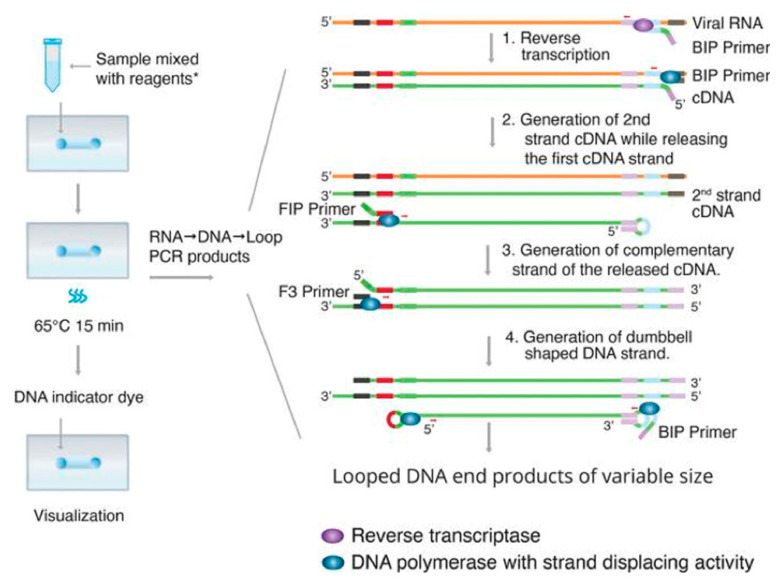Figure 3.
The main principle of the transcription loop mediated isothermal amplification (RT-LAMP) technique. RT-LAMP starts with the reverse transcription of the backward inner primmer (BIP). The BIP primer binds to the target sequence on the 3′ end of the RNA template and synthesizes a copy of the DNA strand (cDNA). Then, by using DNA polymerase, B3 primers bind to the side of the templates, generate the new cDNA strand, and release the first cDNA strand. This single strand of cDNA is then looped at the 3′ end and binds to itself. Next, the forward inner primmer (FIP) binds to the 5′ end of the strand and synthesizes a complementary strand by DNA polymerase. Then, the F3 primer binds to the end and generates a new double strand of DNA by DNA polymerase. The loop keeps running as a dumbbell-structure when the FIP or BIP primer initiates DNA synthesis again at the next target sequence location. The cycle can start at either the forward or backward side of the strand. When it starts, the strand undergoes self-primed DNA synthesis during the elongation stage of the amplification process. This amplification can be done in a short amount of time (approximately 1 h) and occurs at a constant temperature between 60–65 °C. Adapted by permission. Copyright of Linda C. et al. [66].

